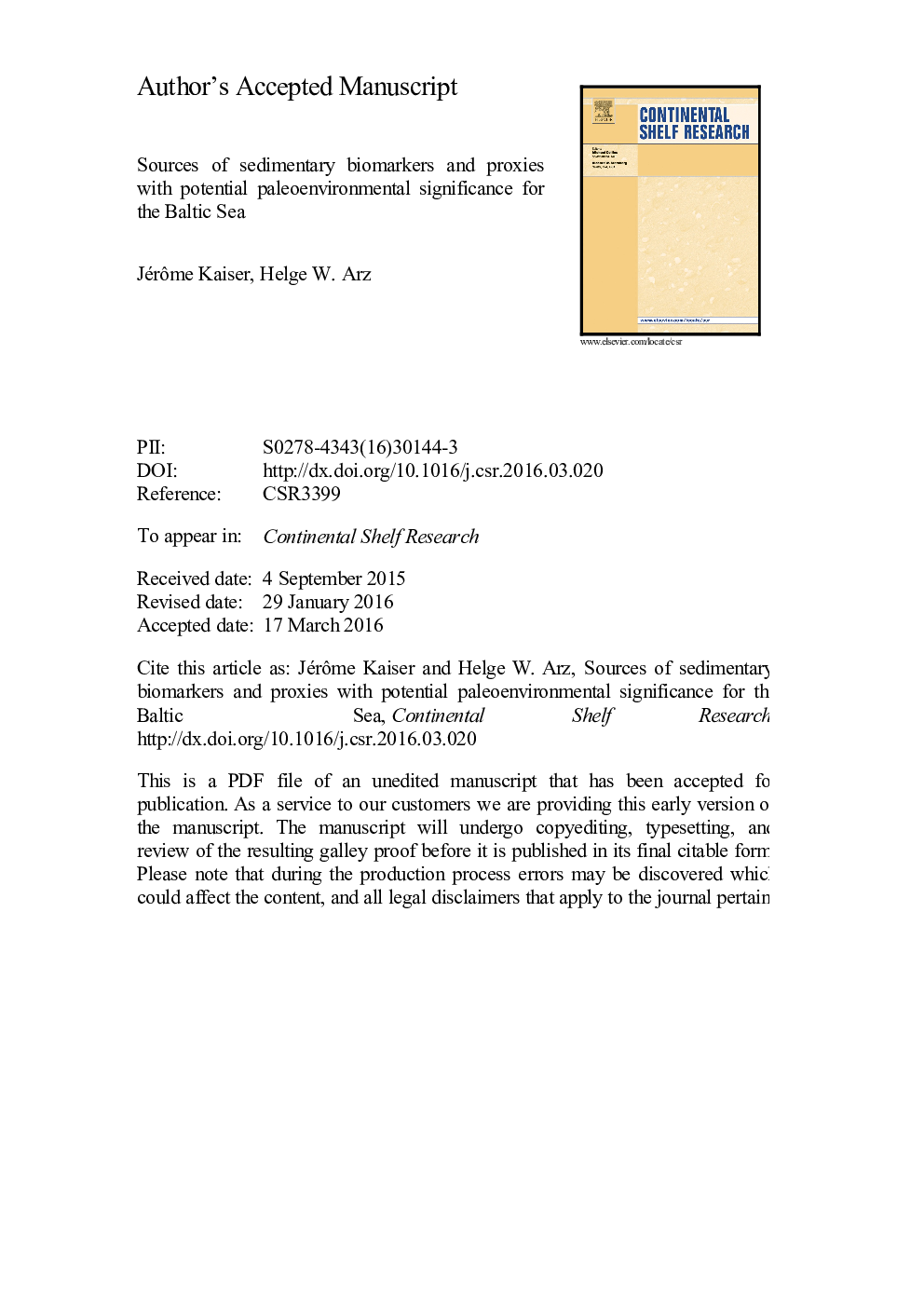| Article ID | Journal | Published Year | Pages | File Type |
|---|---|---|---|---|
| 6382886 | Continental Shelf Research | 2016 | 65 Pages |
Abstract
The Baltic Sea is a shallow, semi-enclosed and intra-continental shelf sea characterized by anoxic bottom waters in the deepest basins, allowing for the preservation of sedimentary organic matter. In the present study, the most abundant, naturally-occurring lipids in surface sediments from the entire Baltic Sea and the Skagerrak area were identified and their potential sources were assigned. Together with long-chain n-alkanes derived from land plant leaf waxes, diploptene and branched glycerol dialkyl glycerol tetraethers (GDGTs) are of allochthonous origin, while isoprenoid GDGTs, hydroxylated isoprenoid GDGTs (OH-GDGTs), n-C25:1, n-C27:1 and n-C29:1 alkenes are autochthonous lipids. The isoprenoid and OH-GDGTs are probably derived from Thaumarchaeota and the long-chain n-alkenes from phototrophic organisms. Significant correlations were found between indexes based on isoprenoid and OH-GDGTs and Baltic Sea surface and bottom temperatures. The calibrations obtained for surface temperature have statistically similar slopes, but different intercepts than calibrations established for the Nordic Seas. The branched and isoprenoid tetraether index can be used to estimate the percentage of soil (terrestrial) organic matter in the sediments of the Baltic Sea. High values of the Paq' ratio (defined here as the ratio of odd numbered n-C23 and n-C25 over n-C23 to n-C29 alkanes) in the northern Baltic Sea originate from the presence of both Sphagnum mosses in the drainage basin and submerged macrophytes, such as Potamogeton sp. and Myriophyllum sp., in the freshwater to brackish water of the coastal areas. The Paq' ratio may thus reflect fluctuations in the regional expansion of freshwater to brackish coastal environments in the Baltic Sea.
Related Topics
Physical Sciences and Engineering
Earth and Planetary Sciences
Geology
Authors
Jérôme Kaiser, Helge W. Arz,
